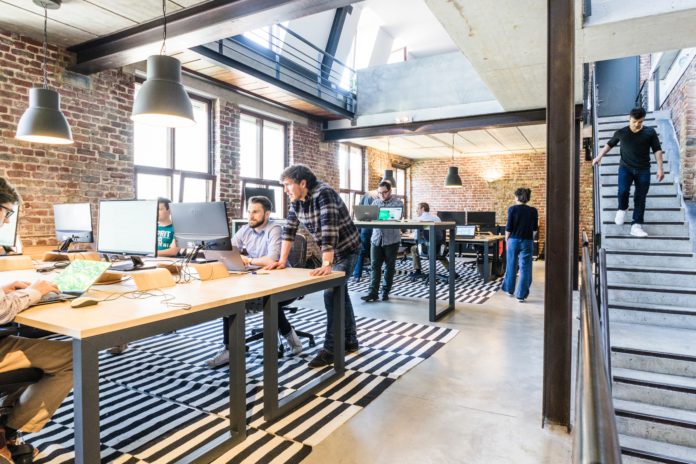Leading Edge Forum (LEF), a global cross-industry think-tank that supports client organisations and leaders for a tech-driven future, released a report which offers a new view into many different contemporary ways of working, proposing practices, habits, and spaces to inspire change within organizations.
The report, entitled ‘Reconfiguring the collaborative workspace: making the most of time, space & attitude‘, investigates a holistic view of our digital and physical hybrid working environments, how issues of trust, presenteeism, communication and culture are manifesting in this time of change.
The report is based on 50 hours of interviews with 2000 live data points from people working in a wide range of environments and at different organizational levels,
Making the most of new ways of working
Organizations have an increasing array of tools and places at their disposal to enable work to happen wherever and whenever it needs to. But to make the most of this potential for a more distributed and mobile workforce, LEF’s report recommends teams and individuals must adapt, developing new etiquette and survival strategies for the new technoscapes in which they work.
In this new work environment, time and space are becoming ever-more fractured and boundaries blur between teams and across organizations, and personal and professional space. It becomes harder and harder for individuals and teams to know how to find effective collaboration and ‘together time’, while protecting the focus time vital to creating value for the organization and preserving private time and space for renewal.
Fragmentation presents daily dilemmas for leaders, teams and individuals. In a matrixed, fluid world of temporary cross-functional teams that are increasingly working on the move, individuals need to find ways to show peers and bosses the value they bring.
Some become overenthusiastic digital presentee-ists, sending messages at all hours and responding to every new message in the team chat; while others go off the radar, becoming unreachable in an effort to hide from information overload, competing demands and too many notifications?
Both extremes point to the same underlying anxiety: employees are pressed to manage increasingly cluttered environments, both digital and physical – a working pattern that becomes a time drain. LEF research shows that while neither extreme is really effective, they are survival tactics seen emerging through this research.
Employees may not be able to put a finger on what’s bothering them, so being able to read the clues and look for the underlying information about what’s really going on is an increasingly important skill for leaders tasked with bringing about organizational change and making it stick. LEF advises leaders not to focus on more collaboration, but more effective collaboration.
“Space is more than place: creating and curating the working environment, virtual and physical, for high performing teams demands a state of constant alertness, watching ourselves at work, probing assumptions, spotting anomalies, shifting habits day to day, to learn and adapt as we go,” explained said Dr Caitlin McDonald, author of the report and Digital Anthropologist at Leading Edge Forum.
“We need to learn to think like anthropologists, to spot the deeper patterns that show up as surface symptoms, in order to actively choose and build workspaces that work for us,” she continued.
Time, space and attitude
The key findings of the study revealed that three aspects of people’s working lives – time, space and attitude – clearly stood out where workers seemed to feel that they governed or were governed by core elements of their working environments.
With these three drivers in mind, organizations seeking to maximise the productivity of ever more asynchronous and distributed teams should consider the following guidance:
Time: Find a rhythm that encourages some synchronicity across the entire team, whether that’s regular in-person meetings, periodic virtual hangouts, or something else. This will reduce the complexity of back-and-forth communications, particularly across large groups.
Space: A degree of autonomy over one’s working environment goes a long way. Everyone likes a lot of light and a view of green plants – there were no surprises in the data as far as those features go. But having the right kind of space for the right job, and the ability to choose aspects of one’s environment even if that choice is limited, gives employees a sense of self-directedness at work.
Attitude: The way people speak about and behave regarding the first two principles gives profound clues to the third. This is how leaders can find out what is really driving their organizational performance. The key is digging under the surface to discover not only what people say but the fundamental shared worldview that resonates throughout the organization. By getting to grips with this, teams have the opportunity to enact profound change in how they work together.
LEF predicts that the challenges of complex distributed systems will continue to describe the way people work together—and apart. They remind business leaders that by continuing to be curious, asking questions and being open to stepping back from regular operations and adjusting course from time to time, organisations can make sure they’re constantly evolving to meet the same challenges showing up in new guises.














